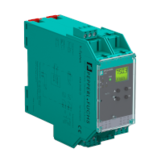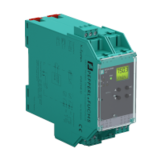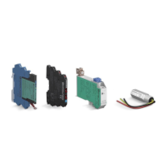风力发电-风力涡轮机的雷电防护
雷电防护
风力是太阳能的一种表现形式。太阳照射引起空气热量不均匀,地球外面不规则性,以及地球自转都会形成风。风的流动会受到地形,水域和植被的影响。于是我们利用风的流动来发电。
风能或风力是指用风力来产生机械动能或电力。风力涡轮机把风的动能转换为机械动能。而这种机械动能被用于特殊用途(如谷物研磨或水泵)或是由发电机将其转换成电能。
那么,风力涡轮机是如何发电的?简单地说,风力涡轮机的工作原理也风扇正好相反。风扇是将电能转换为风能,而风力涡轮机是将风能转化为电能。风吹动叶片轴向旋转,叶片连接到发电机上,这样就可以发电了。
风力涡轮机高度通常为60~150米,很容易遭受雷击和电涌。雷电防护方案均符合IEC 61400-24(VDE 0127 PART 24)标准。
Pepperl+Fuchs的雷电防护产品专门为工业设备(风力发电机)设计,保护其免受雷击。雷电保护、浪涌保护、信号隔离和安全接地等产品品种齐全。

Frequency converters from Pepperl+Fuchs, in combination with inductive sensors, enable reliable detection of the rotational speed. This ensures that the speed of the generator does not exceed certain limits.

Pepperl+Fuchs signal converters transmit analog signals to the controller via galvanic isolation. In wind turbines, for example, temperature converters record the values from temperature sensors and transmit them safely. This makes it possible to monitor that oils or oil films on the drive shaft of the generator do not become too hot.

Transmitter power supplies from Pepperl+Fuchs are used in wind turbines for pressure measurement. They transmit signals from pressure transducers to monitor the oil pressure of the generator shaft.

Wind turbines are up to 200 meters high and therefore very susceptible to lightning. Pepperl+Fuchs offers a complete product portfolio designed for surge protection: The modules reliably discharge surges via grounding, therefore protecting people and equipment. Suitable devices are available for signal and supply lines as well as for fieldbus infrastructure.







 +86 10 5901 7000
+86 10 5901 7000